Handwashing, physical distance, and wearing a mask are the best ways to protect you and those around you from the spread of virus. Not to mention it’s a requirement by most local governments.
**This article was written in May 2020 and some of its information may be outdated.**
We are not doctors. We are not infectious disease experts. However, the FDR team is made up of chefs, and we know that now – more than ever – restaurants of all sizes need to employ strategies for the safety of people and to protect the bottom line.
What follows is an explanation of what we’ve learned about masks in the last couple of weeks as we’ve geared up to provide them to FDR clients and members of the healthcare industry. This is all thanks to a relationship with one of FDR’s manufacturing partners.
Please note: You should always refer to the Center for Disease Control and Prevention, the World Health Organization, and your local governing agencies for health and safety recommendations and regulations pertinent to your restaurant / foodservice organization.
Types of Masks Available to Restaurant and Foodservice Workers
Generally speaking, there are six types of masks used by healthcare professionals, but really only two of them are used to protect against viruses, including the COVID-19 virus.
The N95 mask provides 99.9% filtration of particles thanks to its four-layered construction. The ASTM Level 3 follows closely behind with a three-layer construction that filters 98% of particles. As you might guess, the N95 is the most sought after and also costs more.
Tips for Wearing Masks in the Kitchen
When putting on a mask, you must wash your hands first. If you need to adjust the mask to make it more comfortable or ensure there is no gap between your face and the mask, be sure to wash your hands again. Try to adjust the mask using the elastic or sides of the mask.
The N95 and Leve 3 masks are single-use. Once a mask becomes damp or you are done with a shift, dispose of it carefully. One last thing, don’t rest the mask on your forehead or chin. If you need to take it off, use a fresh mask after that.
Find more mask-wearing tips and downloadable graphics for the workplace on the World Health Organization’s website.
Where to Find Masks
FDR is working with a manufacturing partner to source masks for FDR clients as well as those in medical industries who need them. To learn more or to discuss how Food & Drink Resources may be able to help you procure foodservice masks, contact us.
Thanks for stopping by and reading the Food & Drink Resources blog. Here we talk about food trends, culinary innovation, and the work of our team.
